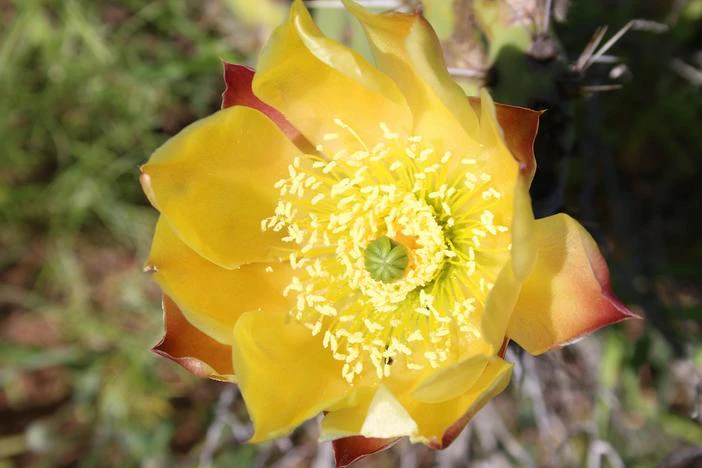Coastal Pricklypear
(Opuntia littoralis)
Coastal Pricklypear (Opuntia littoralis)
/
/

Joe Decruyenaere
CC BY-SA 2.0
Image By:
Joe Decruyenaere
Recorded By:
Copyright:
CC BY-SA 2.0
Copyright Notice:
Photo by: Joe Decruyenaere | License Type: CC BY-SA 2.0 | License URL: https://creativecommons.org/licenses/by-sa/2.0/ | Uploader: joedecruyenaere | Publisher: Flickr





























Estimated Native Range
Climate Requirements for St. Augustine, Florida
| This Plant | Your Site | Plant Suitability for Your Location | ||
|---|---|---|---|---|
| • Precipitation | 4" - 53" | 49" | Aquatic | Aquatic |
| • High Temp. | 68°F - 99°F | 90°F | Your summer temperatures are normal for this plant. | Excellent |
| • Low Temp. | 29°F - 66°F | 47°F | Your winter temperatures are normal for this plant | Excellent |
This plant may not grow well at your location - your precipitation is too high.
Summary
Opuntia littoralis, commonly known as Coastal Pricklypear, is a perennial cactus native to the coastal sage scrub and chaparral of Southern California and Baja California, Mexico. It is well-adapted to dry, sandy soils and thrives in full sun. This species typically forms dense clumps that can reach up to 3 feet in height. The Coastal Pricklypear is characterized by its flat, fleshy, green segments called cladodes, which are armed with clusters of yellowish spines. From late spring to early summer, specifically in May and June, it produces showy flowers that range in color from pale yellow to dull red. Following the flowering period, the plant bears purplish-red, edible fruit that is about 2 inches long and is enjoyed by local wildlife and humans alike.
In cultivation, Coastal Pricklypear is valued for its drought tolerance and is often used in xeriscaping, rock gardens, and as a barrier plant due to its spiny nature. It requires minimal maintenance and is resistant to most pests and diseases, although it can be susceptible to cochineal scale insects. Gardeners should plant it in well-draining soil and provide plenty of sunlight to mimic its natural habitat. It is also important to handle with care due to its spines. Coastal Pricklypear can be propagated easily from cuttings, making it a popular choice for sustainable landscaping.CC BY-SA 4.0
In cultivation, Coastal Pricklypear is valued for its drought tolerance and is often used in xeriscaping, rock gardens, and as a barrier plant due to its spiny nature. It requires minimal maintenance and is resistant to most pests and diseases, although it can be susceptible to cochineal scale insects. Gardeners should plant it in well-draining soil and provide plenty of sunlight to mimic its natural habitat. It is also important to handle with care due to its spines. Coastal Pricklypear can be propagated easily from cuttings, making it a popular choice for sustainable landscaping.CC BY-SA 4.0
Plant Description
- Plant Type: Succulent
- Height: 2-3 feet
- Width: 3-5 feet
- Growth Rate: Moderate
- Flower Color: Red, White, Yellow
- Flowering Season: Spring, Summer
- Leaf Retention: Evergreen
Growth Requirements
- Sun: Full Sun, Part Shade
- Water: Low, Medium
- Drainage: Fast, Medium
Common Uses
Border Plant, Drought Tolerant, Fire Resistant, Low Maintenance, Rock Garden, Showy Flowers
Natural Habitat
Native to the coastal sage scrub and chaparral of Southern California and Baja California, Mexico, adapted to dry, sandy soils
Other Names
Common Names: Sprawling Prickly Pear, Western Prickly Pear
Scientific Names: Opuntia littoralis, Opuntia engelmannii f. littoralis, Opuntia engelmannii var. littoralis, Opuntia lindheimeri var. littoralis, Opuntia littoralis, Opuntia occidentalis var. littoralis, Opuntia semispinosa, Opuntia ×occidentalis var. littoralis
GBIF Accepted Name: Opuntia littoralis